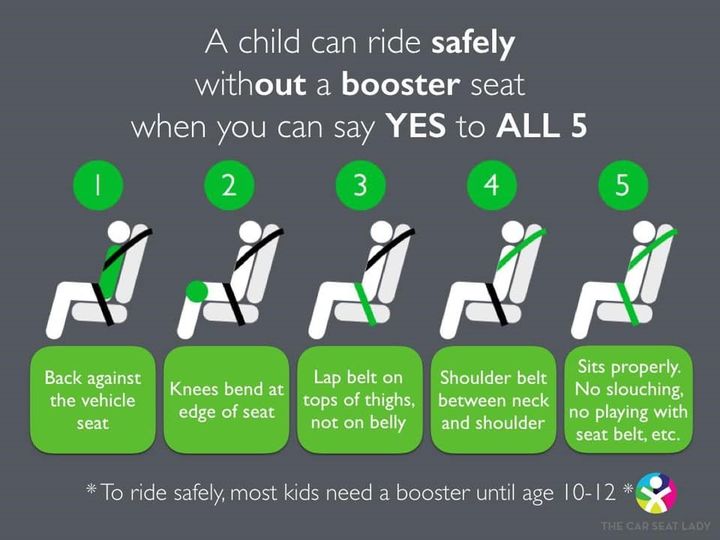Making the Move: When to Upgrade Your Child to a Booster Seat

As a parent, ensuring the safety and well-being of your child is a top priority—particularly when it comes to the dangers of being a child in a car.
Luckily, car seats continue to get safer and child vehicle fatalities are down. With thousands of different car seats on the market, it might be tempting to feel that a higher-priced option is safer—but this isn’t true. In fact, a car seat’s safety rests on its fit and size for your child and their development stage.
Typically, families will use three types of seats throughout their child’s early years: A rear-facing seat, a forward-facing seat, and booster seat. Today, let’s unpack how to determine when your child is ready to upgrade to a booster seat.
Understanding Booster Seats
Booster seats are designed for older children who are big enough to sit correctly without a harness. A booster seat elevates your child’s position in the car to help them align with the vehicle’s existing seat belts. This means that your child will now be using your car’s built-in seatbelts—instead of the special car seat harness. For many children, this may not be until they are six years old or older.
The purpose of a booster seat is to position your child effectively, so the safety belt fits against the shoulders and legs. Car seats and booster seats both protect children, but in different ways. Car seats are designed to protect by using a harness to keep them in a safe position, as the booster uses the seat belt for protection. Booster seats can only be used with lap and shoulder seat belts. They can NEVER be used with a lap belt only.
There are two types of booster seats: High back and backless. High backs offer head and neck support, and are good for younger children who like to fall asleep or just like the extra comfort. Backless are convenient for carpooling and are typically less expensive. However, if using a backless booster, make sure the vehicle seat provides head support. Your child’s ears should be below the top of the vehicle’s headrest.
Transitioning to a Booster Seat
There is no hard and fast rule for when your child should transition to a booster seat. Every child and car seat is unique—and the guidelines for the transition vary by manufacturer and size.
Generally, however, before a child moves to a booster seat, they should meet the following requirements:
- Child meets height, weight, and age requirements for the booster seat. There are many booster seats on the market that all have different requirements—make sure your child meets all criteria before using a booster.
- Lap belt crosses the body on the bones of the upper thighs/hips. If the belt does not cross the thighs or hip bone, they are not ready to be in a booster.
- Shoulder belt crosses mid-shoulder. The shoulder belt keeps the upper body in place during a crash. If the belt does not cross a mid-shoulder, they are not ready to be in a booster.
- Child is mature enough to sit correctly at all times. Maturity is an important factor, but is often overlooked. This means no slouching, leaning side to side, and wearing the seat belt in the correct position at all times.
Tips for a Safe Transition
- Don’t rush. Take your time with transitioning your child to a booster seat. Until the adult seat belt fits correctly, keep using a car seat with a harness.
- Test your booster seat in all the cars your child uses. Just because your child’s booster seat fits in one car doesn’t mean it will have the same fit in another. Test the booster seat in every car before permanently moving to the booster seat.
- Be a good example for your child. Make sure that everyone in your car buckles up—every time.
- Use the back seat. For optimal protection and safety, all children under the age of 13 years old should ride in the back seat of the car.
Child Safety Laws in North Carolina
Seat belt and child safety laws vary from state to state. In North Carolina, children can start using the seat belt with a booster between the age of 8 to 15 or between 40 to 80 pounds.
A properly used safety seat is required for children less than age 8 and less than 80 pounds. The law does not specify which type of car seat can be used at any age or weight, only that the seat is used properly in accordance with the manufacturer’s instructions and meets all Federal Safety Standards in place when the seat was manufactured.
Learn more about child safety laws in North Carolina here.
About Safe Kids Onslow County
Every year, children across the country are injured from preventable events. Safe Kids is a national organization dedicated to protecting kids from unintentional injuries by providing educational programming to reduce traffic injuries, drownings, falls, burns, and other tragedies.
Safe Kids Onslow is a program provided by One Place, with members from other community agencies that support families in our community with car seat installation, car-seat check-ups, safety workshops, and other events to prevent childhood injuries.
If you are looking to get your car seat checked, text “Safe Kids” to (910) 333-0608 to schedule an appointment with a child passenger safety technician. For more information on Safe Kids Onslow, follow along with us on Facebook here.
